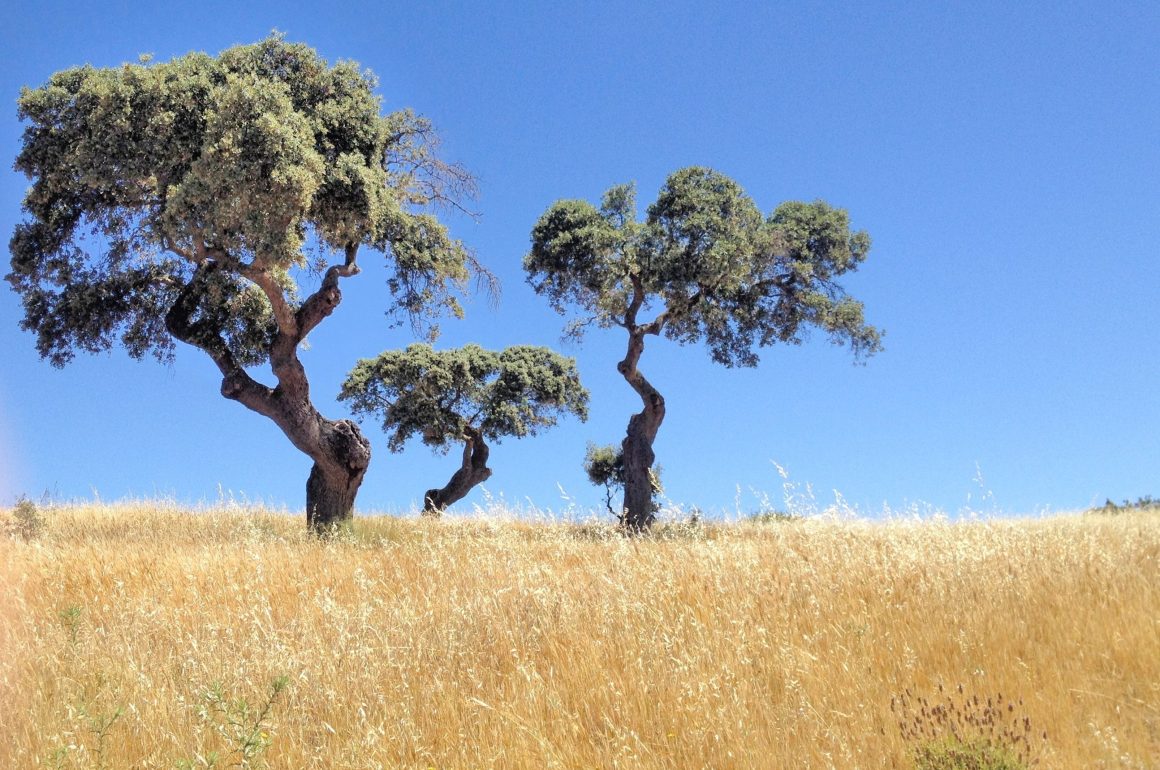
Most birders are familiar with the Spanish dehesas. They might even have a visit to these Mediterranean steppes on their wish list. The Portuguese equivalent would be the montado – a very similar landscape of wide-open plains and scattered oak trees. The dominant oak in the Spanish steppes is the Holm Oak, the Portuguese have Cork Oaks instead. Throw in Iberian Pigs, the odd fighting bull and a few flocks of sheep and the similarities are striking.
With only a few exceptions, the core of the distribution of most steppe birds lies in Spain so the southeastern part of Portugal is the better area to visit. So why go to Portugal if Spain has the same birds? Well, the avian delights may be alike, but the area in Portugal is smaller which makes for easier searching (and finding) and less milage. More importantly, the hospitality sector in Portugal is very good – with great hotels, excellent restaurants and friendly people. The Spanish would agree – they come in droves to visit…
The aforementioned Iberian pigs roam the oak groves, feeding on the acorns, but even the gluttonous pig can’t eat it all so in the colder season Common Crane comes to winter.
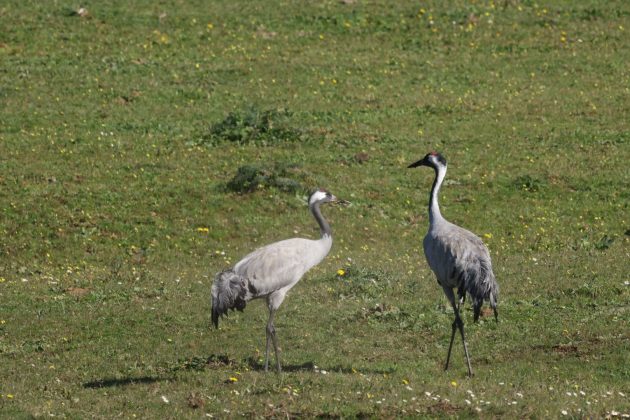
Noisy flocks will settle for the night in the reservoirs, with the Caia reservoir being quite reliable. If you find a good viewpoint before dusk and wait patiently, you will be rewarded with a fly-by performance of these fantastic birds. Check these spots here, here, or here or consult eBird.
But it’s Spring that brings the real joys of the area and unless you think displaying Great Bustard and Little Bustard are boring you should be here in April – May.
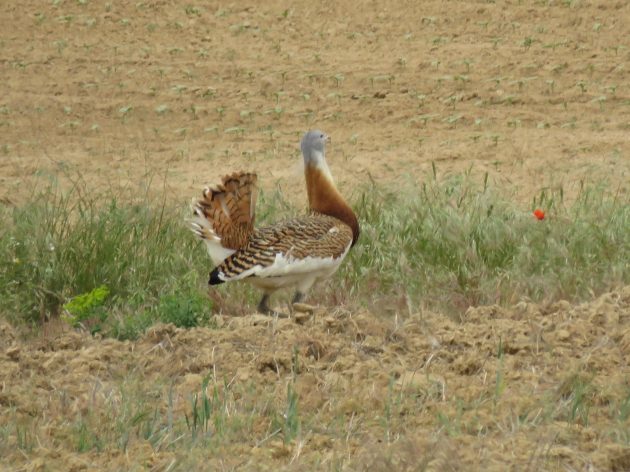
The Great Bustards tend to be far away – as you can see from José Leal’s heavily cropped photos – so a telescope is essential. By the way, José took all bird photos for this post – obrigado Zé!
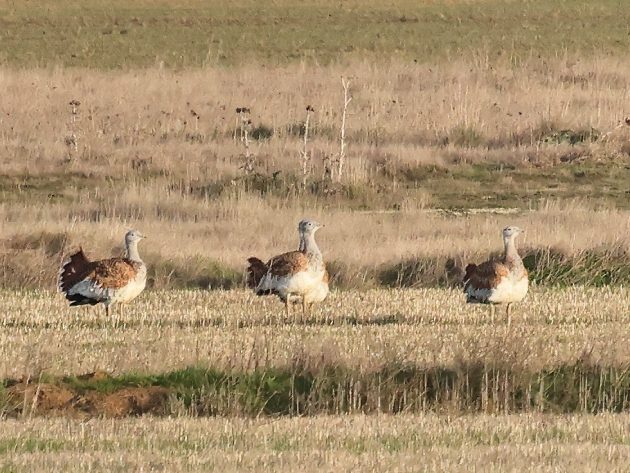
Where is the “here” you should visit in April-May? I find the town of Castro Verde the best base of operations. It is central to most good sites in the area, and finding a place to eat or sleep is easy. I can strongly recommend staying a few nights in Monte da Ameixa. There’s a lot of birds in the surrounding trees (Woodlark!), breakfast is epic and the rooms are clean and spacious.
Your best strategy is to take the EN (Estrada Nacional) 123. Easy to remember – it’s your PIN code minus the last 4. The EN123 itself is not a good road to stop on, so be very careful. Pull over completely and only if you can. Better is to turn into the many roads to the left or right. Each one is worth exploring and for a full map of the area there’s no better book than Dave Gosney’s “Finding Birds in South Portugal”.
Leave early from Castro Verde towards Mértola. Set your endpoint for 37°38’9.62″N and 7°39’44.52″W for the Lesser Kestrels over the Guadiana, enjoy a good lunch in Mértola and keep a close eye on the skies over the town for White-rumped Swift. Then return and do it all over again, but now it will be afternoon and Eurasian Griffon, Cinereous Vulture, Golden Eagle, Spanish Imperial Eagle, Bonelli’s Eagle and Booted Eagle are all possible sightings on the thermals.
And then, on a wire or a post alongside the road, or just flying: European Roller. Now you finally understand what Metallica was singing about. All sorts of thoughts race through your mind: we drove too far south, I really need to stop taking drugs, this must be an escapee – someone let the cage door open at the zoo, or just one simple thought: this bird is breath-taking.
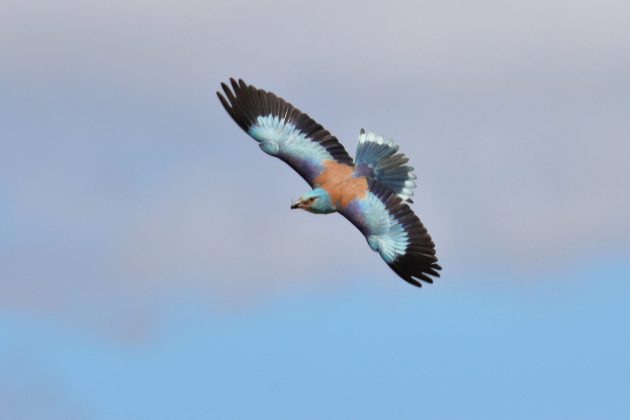
This Roller was photographed on one of those side roads I mentioned, towards Casével.
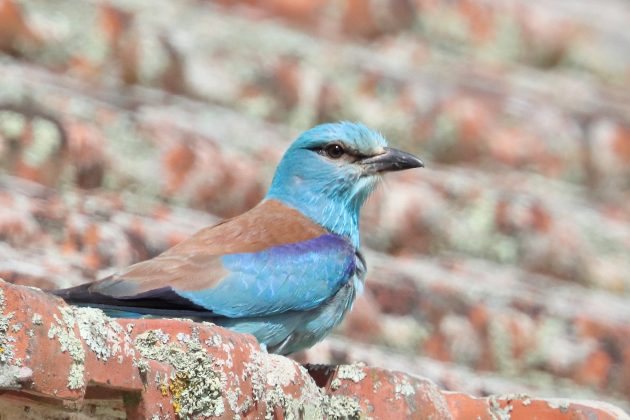
The Roller is struggling, and numbers are down. I hate to end on a low note but the pressures on Rollers are the same ones we see everywhere. Local Portuguese organisations like SPEA and LPN do their best to stem the bleeding. Campaigns, nestboxes, surveillance – it all costs money. I’m not asking you for a donation though. I am asking you to go and visit this wonderful area, enjoy the Rollers and other specialties and conspicuously spend your money. In other words, eat, drink and be merry, but always wear your binoculars around your neck. The Alentejanos will do the rest.
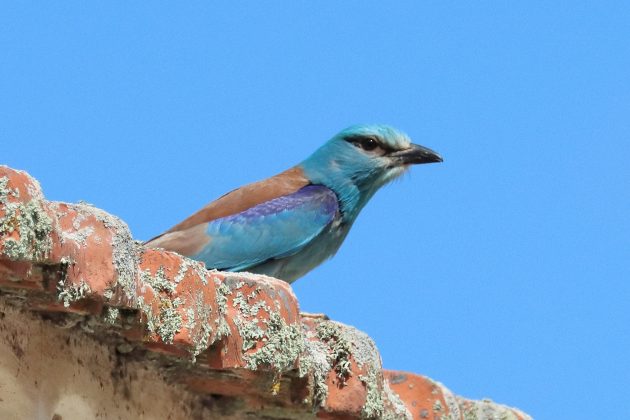











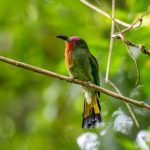

Leave a Comment